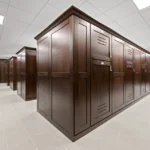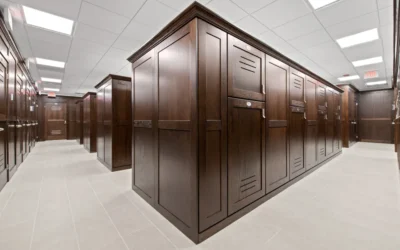As the development cycle kicks into the next gear, Jernigan Capital is rapidly accelerating its self-storage construction loan activity.
The company has already closed on $105.6 million in new development investments during the first 60 days of 2017, and has a pipeline of in place of $800 million of additional investments, according to its recently released year-end financials.
Overall, CEO Dean Jernigan said the self-storage development cycle is poised to intensify this year.
“I do think 2017 will be a big year for adding additional supply,” Jernigan said. “It looks like we are likely to add more this year than last year.”
Jernigan noted that 2016 saw a doubling of the amount of money spent on self-storage construction as reported by the U.S. Census Bureau. The Census reported $1.75 billion worth of construction spending for self-storage, which Jernigan said was likely understated. The Census reports $969 million in spending for 2016.
“2018 will probably be a peak year,” Jernigan said.
Stay out of the danger zone
That amount of activity has sparked concerns that overbuilding will hurt the self-storage industry, but Jernigan said while the biggest threat to his firm is overbuilding, he said the fears are overstated.
“Overbuilding is something a lot of people are talking about, but really without a lot of facts to back up their concerns. Everyone sees clouds on the horizon,” Jernigan said.
Jernigan said more and more data is becoming available for tracking storage development, which is helping builders make better decisions.
For the time being, overbuilding is confined to specific markets and submarkets, Jernigan said.
“Austin is going to be overbuilt. Pars of Dallas will be over built. Miami has two, possibly three submarkets that have enough storage going on right now,” Jernigan said.
Other cities on Jernigan’s danger list: Charlotte, Portland, Denver and Boston.
JCAP has updated our Danger Zone and Watch List markets. We encourage all in the self-storage sector to keep these on your radar. pic.twitter.com/c1eV7YY4iJ
— Dean Jernigan (@deanjernigan) February 17, 2017
“We do have a few markets we continue to be concerned about that we are basically excluding from our business plan,” Jernigan said.
That still leaves plenty of room for Jernigan to back developers everywhere else. Most new storage facilities, about 75 percent, are being built by merchant builders who plan to sell their facilities in the not-too-distant future.
For the near term, Jernigan doesn’t expects the REITs to be actively buying too many of those properties.
“It appears to me that with the recent pullback in share prices for the REITS they pulled their horns in some on acquisitions, at least on CO acquisitions [new builds].”
That is because the gap between seller expectations and buyer desires hasn’t closed yet, but when it does there will be a lot of newly built facilities trading hands.
“Those days are ahead of us, and those will be fun acquisition days for everyone with capital,” Jernigan said.







